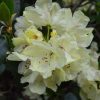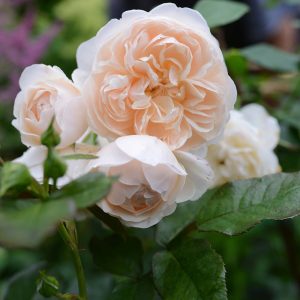Description
Rhododendron ‘Goldkrone’ is a beautiful evergreen shrub with a compact and upright growth habit, growing up to 1.5m high and 1.2m wide. The oval-shaped leaves are dark green, glossy, and have a slightly serrated edge, adding an ornamental value to the plant even when it’s not in bloom. The plant produces a profusion of showy and fragrant flowers in late spring, arranged in large trusses of up to 15 bright golden-yellow blossoms. The trumpet-shaped flowers have a reddish-brown blotch at the base of each lobe and can last up to several weeks, making them a spectacular sight in any garden. Rhododendron ‘Goldkrone’ is a hardy and easy-to-grow plant that prefers acidic, well-draining soils and partial shade. It’s a great choice for woodland gardens, mixed borders, or as a statement plant in a container. It has been awarded the prestigious RHS Award of Garden Merit.
Key Facts
- Common Name(s):Rhododendron ‘Goldkrone’
- Hardiness:Fully hardy
- How big will I get? Rhododendron ‘Goldkrone’ can grow to a height of 1.2m and a spread of 1.2m.
- Did You Know That:Rhododendrons belong to the heath family and are related to blueberries, cranberries, and heathers?
Plant Calendar
A rough guide to how this plant will change through the year.
| Jan | Feb | Mar | Apr | May | June | July | Aug | Sept | Oct | Nov | Dec | |
| Flowering Time |  |
|||||||||||
| Foliage Colour |  |
 |
 |
 |
 |
 |
 |
 |
 |
 |
 |
 |
| J | F | M | A | M | J | J | A | S | O | N | D |
 |
|||||||||||
 |
 |
 |
 |
 |
 |
 |
 |
 |
 |
 |
 |
Care Guide

Soil Requirements
Rhododendron ‘Goldkrone’ prefers moist but well-draining soil. This plant requires acidic soil to thrive and cannot grow in neutral or alkaline soil conditions.

Best Position
Rhododendron ‘Goldkrone’ prefers a sheltered position and likes the sun but not too much of it, so an area that is partially shaded is perfect.

Maintenance
Rhododendron ‘Goldkrone’ is fairly low maintenance and doesn’t require any pruning.

Pest, Diseases and Wildlife
Rhododendron ‘Goldkrone’ can have problems with aphids, vine weevil and scale insects, it can be vulnerable to certain diseases such as powdery mildews and bud blast. It is also known to attract bees and butterflies. It is considered to be toxic.





